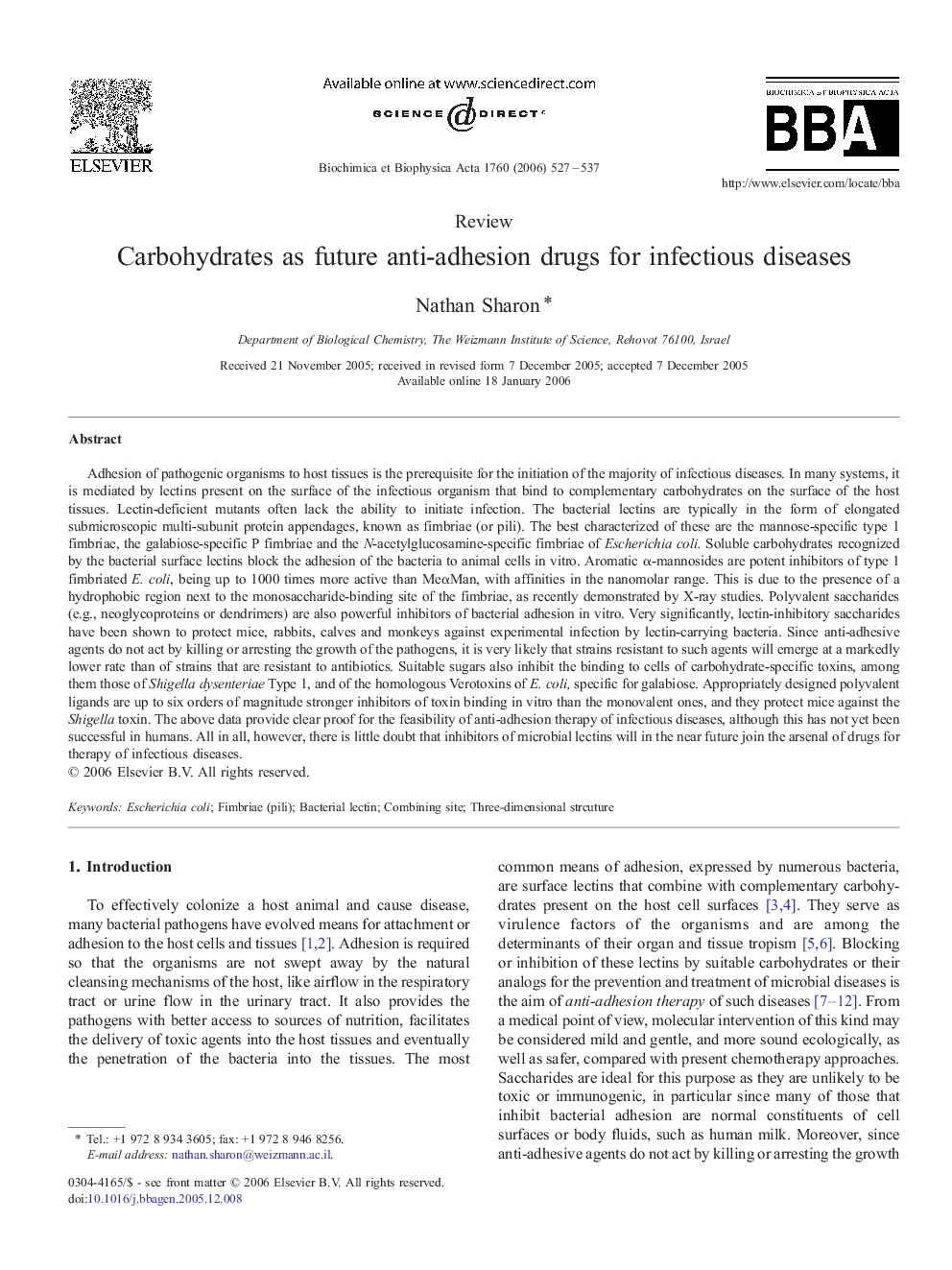| کد مقاله | کد نشریه | سال انتشار | مقاله انگلیسی | نسخه تمام متن |
|---|---|---|---|---|
| 1948834 | 1054713 | 2006 | 11 صفحه PDF | دانلود رایگان |

Adhesion of pathogenic organisms to host tissues is the prerequisite for the initiation of the majority of infectious diseases. In many systems, it is mediated by lectins present on the surface of the infectious organism that bind to complementary carbohydrates on the surface of the host tissues. Lectin-deficient mutants often lack the ability to initiate infection. The bacterial lectins are typically in the form of elongated submicroscopic multi-subunit protein appendages, known as fimbriae (or pili). The best characterized of these are the mannose-specific type 1 fimbriae, the galabiose-specific P fimbriae and the N-acetylglucosamine-specific fimbriae of Escherichia coli. Soluble carbohydrates recognized by the bacterial surface lectins block the adhesion of the bacteria to animal cells in vitro. Aromatic α-mannosides are potent inhibitors of type 1 fimbriated E. coli, being up to 1000 times more active than MeαMan, with affinities in the nanomolar range. This is due to the presence of a hydrophobic region next to the monosaccharide-binding site of the fimbriae, as recently demonstrated by X-ray studies. Polyvalent saccharides (e.g., neoglycoproteins or dendrimers) are also powerful inhibitors of bacterial adhesion in vitro. Very significantly, lectin-inhibitory saccharides have been shown to protect mice, rabbits, calves and monkeys against experimental infection by lectin-carrying bacteria. Since anti-adhesive agents do not act by killing or arresting the growth of the pathogens, it is very likely that strains resistant to such agents will emerge at a markedly lower rate than of strains that are resistant to antibiotics. Suitable sugars also inhibit the binding to cells of carbohydrate-specific toxins, among them those of Shigella dysenteriae Type 1, and of the homologous Verotoxins of E. coli, specific for galabiose. Appropriately designed polyvalent ligands are up to six orders of magnitude stronger inhibitors of toxin binding in vitro than the monovalent ones, and they protect mice against the Shigella toxin. The above data provide clear proof for the feasibility of anti-adhesion therapy of infectious diseases, although this has not yet been successful in humans. All in all, however, there is little doubt that inhibitors of microbial lectins will in the near future join the arsenal of drugs for therapy of infectious diseases.
Journal: Biochimica et Biophysica Acta (BBA) - General Subjects - Volume 1760, Issue 4, April 2006, Pages 527–537